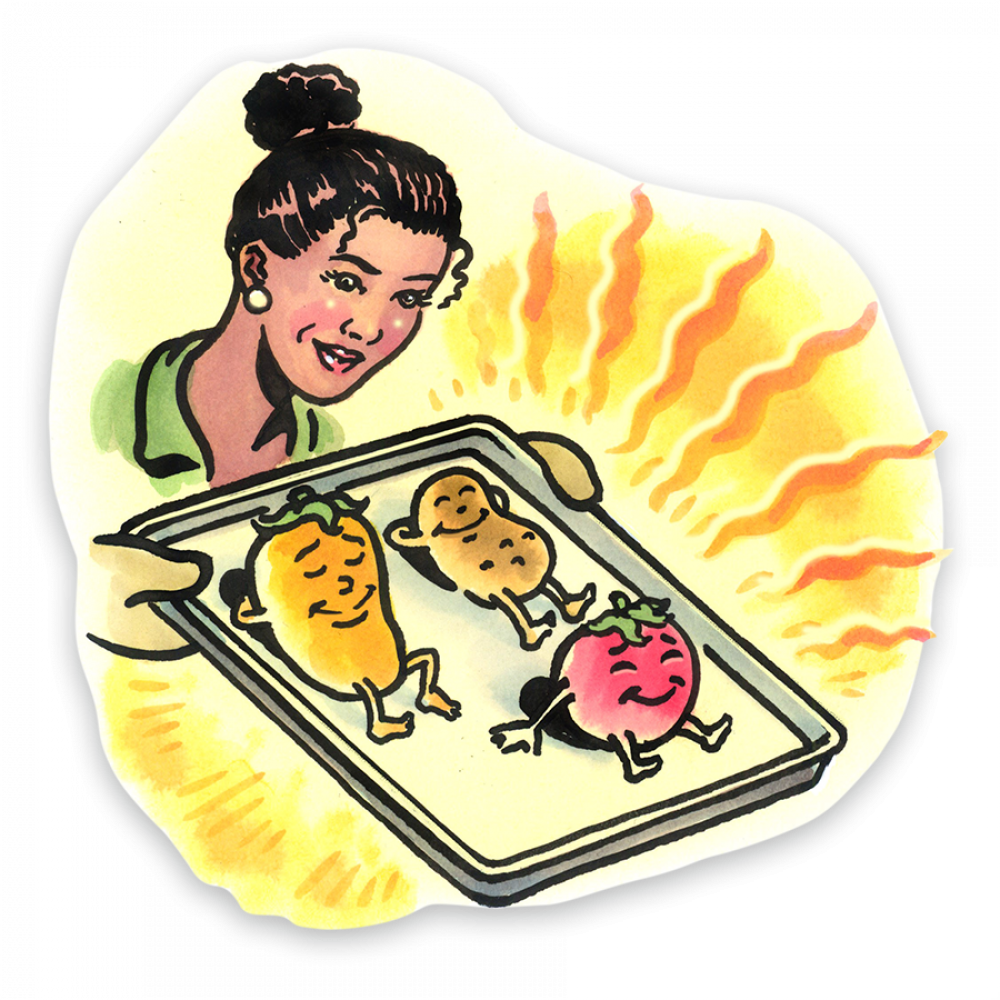
Open Sesame
Tahini is a go-to ingredient at Milk Street. But as much as we love this rich, flavorful sesame paste, it tends to separate in the jar. We’ve even noticed that some brands separate more than others. And sometimes, our tahini sauces will seize, becoming a stiff paste. It was time for explanations and solutions.
Tahini is very much like peanut butter and chocolate ganache—a solution that’s roughly equal parts oil and solids. Tahini starts with ground sesame seeds; the more finely ground the seeds are, the better the sesame oil coats the solids and prevents the parts from separating. When tahini separates, try shaking it vigorously until combined—a technique that works best with higher-quality brands, which are more finely ground and have a thinner consistency. More coarsely ground brands may need to be emptied into a larger bowl and whisked vigorously until smooth (clumps can be hard to stir smooth in the jar). As for the seizing, tahini’s oil-solid composition is to blame.
Tahini (much like chocolate) can seize when combined with another liquid because the moisture wets the surface of the tahini solids, then acts like a glue that causes those particles to pull away from the oil and clump together. Acidic ingredients, such as lemon juice, intensify this reaction. The easy fix is somewhat counterintuitive: Stirring in additional liquid will re-emulsify the tahini mixture into a smooth sauce—a technique that also works with seized chocolate. In both cases, the additional liquid dissolves the clumped solids, allowing the mixture to recombine.
A Sticky Situation
We love the convenience of make-ahead cinnamon rolls, and so does Will Van Patter, of Downingtown, Pennsylvania. But every time he pulls his pre-assembled cinnamon rolls out of the refrigerator or freezer to thaw and bake, he discovers a pool of sugar syrup at the bottom of the pan. He wonders why this happens and whether it matters.
We started by reviewing the recipe. We noticed that it not only had a large amount of sugar relative to the dough, it also had a high ratio of brown sugar. And that is what makes cinnamon rolls particularly susceptible to weeping when refrigerated or frozen. Sugar is hygroscopic, meaning that it readily absorbs moisture from the air. This is especially true of brown sugar, which consists of granules of white sugar (sucrose) coated with a molasses-like mixture of glucose and fructose—sugars that are more hygroscopic than sucrose, and thus pull more moisture out of the air than regular sugar. When the cinnamon rolls are removed from the refrigerator or freezer, moisture attracted by the glucose and fructose has condensed on the surfaces of the cold rolls. This moisture dissolves the sugars, forming a syrup that drains and pools on the bottom of the pan. Happily, we discovered that the pooled sugar syrup did not affect the rise or the baking of the dough. As long as we baked them until deeply browned, the rolls came out just fine. Problem (deliciously) solved.
Tricks of the Traybake
Because it is coated with silicone polymer, kitchen parchment is grease- and moisture-proof, as well as nonstick. So we use it often in baking, where it ensures delicate cakes and cookies slide free with ease. Those same properties had Jennifer Trone, of New York City, wondering whether parchment might be a better choice than foil when roasting vegetables.
To determine whether foil or parchment was best for roasting vegetables, we prepared lightly oiled carrots, potatoes, cauliflower, green beans and eggplant three ways: on an unlined sheet pan coated with cooking spray, on a parchment-lined pan (no cooking spray) and on a foil-lined pan (no cooking spray). The parchment- lined pan performed slightly better than the foil-lined pan at preventing the vegetables from sticking, though not dramatically so, and both performed better than the unlined tray. But neither browned the vegetables as well as the unlined pan. That’s because the foil and parchment act as a slight barrier to heat transfer. So while lining the pan offers a bit less sticking and easier cleanup, you do sacrifice some of the flavorful high-heat charring of an unlined pan. Another consider- ation: Parchment doesn’t tolerate high heat. The recommended maximum temperature for kitchen parchment is 425 to 450°F. Though parchment’s silicone coating is heat-safe to temperatures up to 500°F, the paper itself is not. Like all paper, parchment burns at any temperature over 450°F. Even in a 500°F oven, parchment is unlikely to ignite, but it will scorch and become extremely brittle. Bleached kitchen parchment, however, has been treated with chlorine and can emit toxic substances called dioxins when heated above 450°F. For all these reasons, we prefer roasting on unlined baking sheets.




